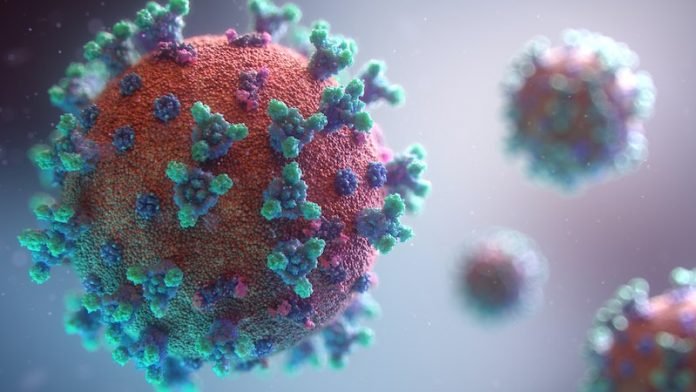
In a new study, researchers found that the COVID-19 virus has mutated in a way that’s enabled it to spread quickly around the world, but the spike mutation may also make the virus more susceptible to a vaccine.
The new strain of coronavirus, called D614G, emerged in Europe and has become the most common in the world.
They found the D614G strain replicates faster and is more transmissible than the virus that spread in the beginning of the pandemic.
There were bright spots in the study findings: While the D614G strain spreads faster, in animal studies it was not associated with more severe disease, and the strain is slightly more sensitive to neutralization by antibody drugs.
The research was conducted by a team at the University of North Carolina at Chapel Hill and the University of Wisconsin-Madison.
The team has studied coronaviruses for more than three decades and was integral in the development of remdesivir, the first FDA-approved treatment for COVID-19.
They believe the D614G strain of coronavirus dominates because it increases the spike protein’s ability to open cells for the virus to enter. These crown-like spikes give the coronavirus its name.
The D614G mutation causes a flap on the tip of one spike to pop open, allowing the virus to infect cells more efficiently but also creating a pathway to the virus’s vulnerable core.
With one flap open, it’s easier for antibodies—like the ones in the vaccines currently being tested—to infiltrate and disable the virus.
For this study, the team replicated a matched pair of mutant SARS-CoV-2 viruses that encoded D or G at position 614 and compared basic property analysis using cell lines, primary human respiratory cells, and mouse and hamster cells.
They found that the mutated virus not only replicates about 10 times faster—it’s also much more infectious.
Researchers began looking for a replication of the virus in the uninfected animals on day two. Both viruses passed between animals via airborne transmission, but the timing was different.
The researchers also examined the pathology of the two coronavirus strains. Once hamsters were infected, they presented essentially the same viral load and symptoms.
This suggests that while the mutant virus is much better at infecting hosts, it doesn’t cause significantly worse illnesses.
Researchers caution that the pathology results may not hold true in human studies.
To maximally protect public health, they must continue to track and understand the consequences of these new mutations on disease severity, transmission, host range and vulnerability to vaccine-induced immunity.
One author of the study is Ralph Baric, a professor of epidemiology at the UNC-Chapel Hill Gillings School of Global Public Health.
The study is published in Science.
Copyright © 2020 Knowridge Science Report. All rights reserved.



